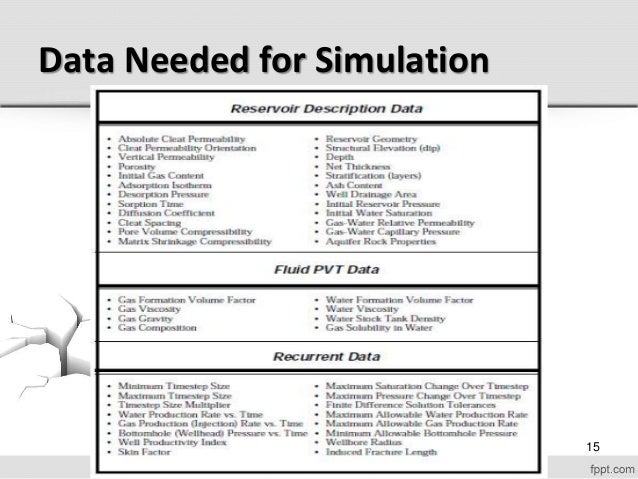Comet 3 Reservoir Simulation Software
Contents • • • • • Uses Reservoir simulation models are used by oil and gas companies in the development of new fields. Also, models are used in developed fields where production forecasts are needed to help make investment decisions. As building and maintaining a robust, reliable model of a field is often time-consuming and expensive, models are typically only constructed where large investment decisions are at stake. Improvements in simulation software have lowered the time to develop a model. Also, models can be run on personal computers rather than more expensive workstations. For new fields, models may help development by identifying the number of wells required, the optimal completion of wells, the present and future needs for artificial lift, and the expected production of oil, water and gas.

For ongoing reservoir management, models may help in improved oil recovery by hydraulic fracturing. Highly deviated or horizontal wells can also be represented.
Specialized software may be used in the design of hydraulic fracturing, then the improvements in productivity can be included in the field model. Also, future improvement in oil recovery with pressure maintenance by re-injection of produced gas or by water injection into an aquifer can be evaluated. Water flooding resulting in the improved displacement of oil is commonly evaluated using reservoir simulation. The application of enhanced oil recovery (EOR) processes requires that the field possesses the necessary characteristics to make application successful. Model studies can assist in this evaluation.
Windower download. EOR processes include miscible displacement by natural gas, CO 2 or nitrogen and chemical flooding (polymer, alkaline, surfactant, or a combination of these). Special features in simulation software is needed to represent these processes. In some miscible applications, the 'smearing' of the flood front, also called numerical dispersion, may be a problem. Reservoir simulation is used extensively to identify opportunities to increase oil production in heavy oil deposits.
Oil recovery is improved by lowering the oil viscosity by injecting steam or hot water. Typical processes are steam soaks (steam is injected, then oil produced from the same well) and steam flooding (separate steam injectors and oil producers). These processes require simulators with special features to account for heat transfer to the fluids present and the formation, the subsequent property changes and heat losses outside of the formation. A recent application of reservoir simulation is the modeling of coalbed methane (CBM) production. This application requires a specialized CBM simulator. In addition to the normal fractured (fissured) formation data, CBM simulation requires gas content data values at initial pressure, sorption isotherms, diffusion coefficient, and parameters to estimate the changes in absolute permeability as a function of pore-pressure depletion and gas desorption. Fundamentals Traditional simulators dominate both theoretical and practical work in reservoir simulation.
The internal calculations performed by the COMET 3 software were applied to the. Through reservoir modeling studies, sequestration performance indicators.
Conventional FD simulation is underpinned by three physical concepts:, fluid phase behavior, and the approximation of fluid flow through porous media. Thermal simulators (most commonly used for applications) add to this list, allowing temperatures to change within the reservoir. Numerical techniques and approaches that are common in modern simulators: • Most modern FD simulation programs allow for construction of 3-D representations for use in either full-field or single-well models. 2-D approximations are also used in various conceptual models, such as cross-sections and 2-D radial grid models.
• Theoretically, finite difference models permit discretization of the reservoir using both structured and more complex unstructured grids to accurately represent the geometry of the reservoir. Local grid refinements (a finer grid embedded inside of a coarse grid) are also a feature provided by many simulators to more accurately represent the near wellbore multi-phase flow affects. This 'refined meshing' near wellbores is extremely important when analysing issues such as water and gas coning in reservoirs. • Representation of faults and their transmissibilities are advanced features provided in many simulators. In these models, inter-cell flow transmissibilities must be computed for non-adjacent layers outside of conventional neighbor-to-neighbor connections. • Natural fracture simulation (known as dual-porosity and dual-permeability) is an advanced feature which model hydrocarbons in tight matrix blocks.